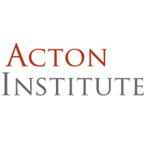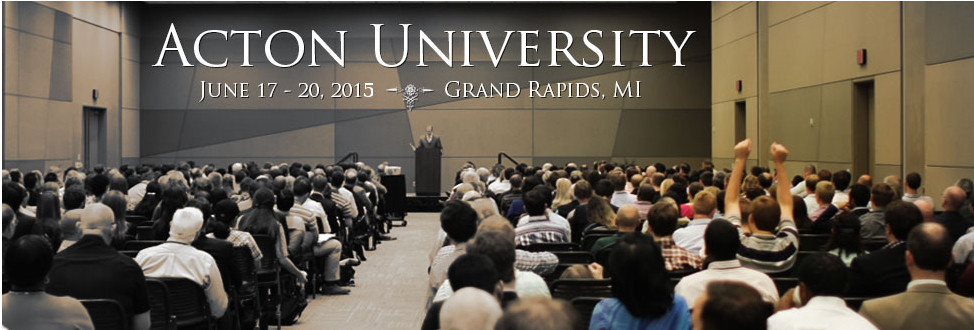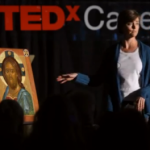Deprecated: trim(): Passing null to parameter #1 ($string) of type string is deprecated in /home/aoiusa/public_html/wp-content/plugins/sexybookmarks/public.php on line 388
Deprecated: trim(): Passing null to parameter #1 ($string) of type string is deprecated in /home/aoiusa/public_html/wp-content/plugins/sexybookmarks/public.php on line 394
Deprecated: trim(): Passing null to parameter #1 ($string) of type string is deprecated in /home/aoiusa/public_html/wp-content/plugins/sexybookmarks/public.php on line 400
Moral courage is an attribute of authentic faith in Christ. David Daleiden, the director of the Center for Medical Progress (CMP) and a pro-life activist, has courageously pulled back the curtains on Planned Parenthood and exposed crimes against humanity that rival what we previously attributed to evil regimes like Nazi Germany. People take umbrage at the suggestion that Planned Parenthood and Nazi Germany share the same debased view of of human life. But what other comparison makes sense of Planned Parenthood’s crimes?
Confronting evil also requires spiritual maturity and interviewer Kevin Allen asked Daleiden about factors that influenced his work. Daleiden, a traditionalist Catholic, cited Orthodox practices including the Jesus Prayer which he would recite while interviewing his subjects undercover.
[W]hen I first started doing pro-life work, when I was in late high school, college, I would frequently go to Orthodox vespers on Saturdays at the Greek Orthodox Church in Sacramento, which was where I grew up. And the Jesus prayer, “Lord Jesus Christ, Son of God, have mercy on me, a sinner,” is still one of the cornerstones of my prayer life. It’s something that we said many times undercover at different abortion meetings with different abortion doctors.
The videos produced by CMP may have more far reaching effects than the invention of the sonogram which revealed that the ‘fetus’ (Latin: little one) was a real unborn baby and not just an abstraction. The sonogram breathed life into the pro-life arguments with the strength of a winter storm. The CMP videos will put to rest any idea that Planned Parenthood is interested in anything except money. Greed, not altruism, drives that pernicious organization.
Anyone who seeks to know truth (and is emotionally ready) ought to watch the videos on the CMP website. Be warned however that sometimes truth is a fire that burns. All euphemisms, all sophistry, all the language calculated to hide the reality of what happens in the ‘clinics’ of Planned Parenthood and their business partners will perish in the flames. A man with a sound conscience can arrive at only one conclusion: The actions of Planned Parenthood are evil.

Source: Ancient Faith Radio
In this special edition of Ancient Faith Today, Kevin speaks, in this extensive interview, with David Daleiden, the director of the Center For Medical Progress, the pro-life activist organization that planned and produced the exposé videos that have shaken the abortion industry in the United States.
Listen here:

Transcript
Mr. Kevin Allen: Thank you for joining me on this special edition of Ancient Faith Today. You know, there are few stories with greater current significance and more “legs,” as we say in media, in the U.S. right now than the seven recent exposé videos that the pro-life activist organization, the Center for Medical Progress, released beginning in July, showing Planned Parenthood officials, the nation’s single largest provider of abortion and women’s health issues, and some of their affiliate organizations discussing, sometimes quite brazenly, reimbursement for donations of fetal tissue—organs, body parts—as well as “intact fetal cadavers,” with a non-existent biomedical research company called “BioMax Procurement Services.”
Secret recordings, as many of you know, of seven meetings using professional actors were produced and released with Planned Parenthood and Planned Parenthood officials, and these videos, especially the seventh, which features testimony from a Holly O’Donnell, a former procurement technician at StemExpress, a California company that until recently acquired aborted baby parts from Planned Parenthood, in which she alleges witnessing that Planned Parenthood committed infanticide of a baby with a heartbeat outside the womb so as to extract that baby’s brain. Well, that and all of the others have powerfully reopened the national discussion about the legal and moral implications of abortion.
Subsequent to the release of this series of videos, five states have now defunded Planned Parenthood—Louisiana, New Hampshire, Alabama, Utah, and Arkansas—and I’m only assuming that others are considering it. Six additional states are investigating Planned Parenthood, and even in the progressive state of California, Melissa A. Melendez, a Republican in Lake Elsinore, has officially requested to the joint legislative audit committee a state audit of Planned Parenthood, and the house commerce committee just announced it’s expanding its investigation of Planned Parenthood and several other Planned Parenthood affiliates about their practices relating to fully intact aborted babies, which, if guilty, these organizations could be violating federal law, known as the Born-Alive Infants Protection Act.
However, and as we know with our political process, Democrats on the House of Representatives oversight committee are just launching an investigation, not on the abortion giant Planned Parenthood, but on the Center for Medical Progress, the group behind the series of exposé videos.
Well, I’m privileged to have the director of the Center for Medical Progress as my guest in studio today. David Daleiden is the director of the CMP, the Center for Medical Progress, and has long been a pro-life activist. He’s only 26 years old, and considered a hero by many in the Christian and pro-life community. I’m pleased and honored to have David Daleiden as my guest on the program today. David, welcome to Ancient Faith Today.
Mr. David Daleiden: Thank you so much for having me on, Kevin.
Mr. Allen: Our privilege and pleasure. First, before we get into specifics and background and all of the issues that we’ll cover in this extensive interview, did you ever think or imagine that this video exposés that you were planning would have the significant impact that they are having on the national and perhaps international discussion, both legal and moral, on abortion?
Mr. Daleiden: Well, we certainly thought that the project itself, that the information that we were documenting and illustrating about how Planned Parenthood sells the body parts of the babies that they abort, that that was information that was going to be shocking to the public, and that that was going to be big news. I don’t think anybody realized that it was going to be “ten presidential candidates commenting on the first day” big. That’s a sort of volume of discussion that I don’t think that you can necessarily plan for or completely expect. So we knew it was going to be big, I hoped that it was going to be big and have a big impact and that a lot of people would enter that discussion, but I really had no expectation that it would be as large as it’s become.
Mr. Allen: And as we were briefly discussing, there’s been a lot of political as well as legal push-back. Were you surprised by that and prepared for that?
Mr. Daleiden: You know, actually I kind of take a different perspective on that than I think a lot of people do, from the outside looking in; more from the eye of the hurricane looking out actually feels a lot calmer in there than some people might think. So I was surprised it took for there to be any kind of significant push-back from the abortion industry, led by Planned Parenthood. I think that that’s an indication and a symptom of how off-guard this project took them. The baby-parts trafficking was the last thing that Planned Parenthood and their allies were expecting to have to talk about, the last thing that they were prepared to talk about, and the last thing that they were prepared to talk about in public, and that’s why they are kind of desperately trying to change the conversation to anything else that they possibly can.
Mr. Allen: Well, let’s begin, because I know my listeners are going to be interested in this, with a bit of personal background. I understand you’re a traditional Latin Mass Tridentine Catholic. Is that correct?
Mr. Daleiden: That’s correct, yeah. I like to just call it Catholic.
Mr. Allen: Okay, and I’ve heard you have some Orthodox connections in your ancestral background?
Mr. Daleiden: I do, yeah. My maternal grandfather was Greek, and I believe that he was baptized and chrismated Greek Catholic, but definitely, ethnically, historically, that connection is there.
Mr. Allen: Interesting. And you wrote to me in an email as we were kind of ramping up for this wonderful conversation we’re having and going to have this. You wrote: “The ancient prayer and rituals of the Orthodox Church, including the Divine Liturgy, are some of the biggest spiritual influences on my work.” So how has Orthodoxy in this context influenced your work?
Mr. Daleiden: Definitely. So I think, first of all, we know that the Church is—the Catholic and Orthodox churches were united for the first thousand years, so the ancient Roman Mass that I usually attend on Sundays was the Mass of the Orthodox Western world for a thousand years while the churches were united, and the Divine Liturgy of the Eastern churches is still said in many Catholic churches around the world, and was the prayer of the Eastern Catholic Church for the first thousand years. So that connection is very strong and has always been there.
But also Orthodoxy, specifically as it is today, back when I first started doing pro-life work, when I was in late high school, college, I would frequently go to Orthodox vespers on Saturdays at the Greek Orthodox Church in Sacramento, which was where I grew up. And the Jesus prayer, “Lord Jesus Christ, Son of God, have mercy on me, a sinner,” is still one of the cornerstones of my prayer life. It’s something that we said many times undercover at different abortion meetings with different abortion doctors.
Mr. Allen: Wow.
Mr. Daleiden: Yeah. So, Orthodoxy is… I’m really someone who really just sees things like that as two sides of the same coin. And the Orthodox Church, to me, is just as much of a spiritual fountain of grace as what I find from my Catholic Church.
Mr. Allen: David, can you summarize, as we start to get into the issues of these exposés, can you summarize for our listeners the major new news points about Planned Parenthood that you feel that your videos have uncovered, that the public media and even the government—although they don’t appear to be willing to admit it right now—might not have been aware of?
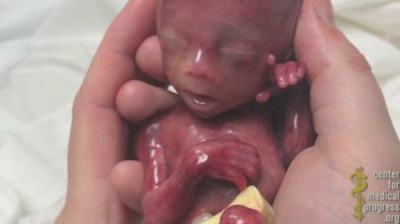 Mr. Daleiden: You know, I think the biggest thing that almost everybody seems to say after starting to watch the videos is: “I had no idea that this was going on.” And it’s sad, because the harvesting and sale of aborted baby parts has actually been going on for decades, and Planned Parenthood has been involved in it in a major way for decades, and government money has been involved in it for decades. And even many politicians, many government people, officials, have been shocked to find out that this is taking place. And the public has been absolutely shocked and outraged, because this really… Fetal trafficking is really the capstone of the abortion industry. It’s what comes beyond abortion, and it’s what comes when you have abortion clinics led by Planned Parenthood that are well-established, that are successful, that are high-volume, and that aren’t being challenged. And this is sort of the logical next step for them to start to take, so it really is the capstone of the industry, but it’s also the dirty little secret that they’ve kept buried down so far that nobody else would find out about it.
Mr. Daleiden: You know, I think the biggest thing that almost everybody seems to say after starting to watch the videos is: “I had no idea that this was going on.” And it’s sad, because the harvesting and sale of aborted baby parts has actually been going on for decades, and Planned Parenthood has been involved in it in a major way for decades, and government money has been involved in it for decades. And even many politicians, many government people, officials, have been shocked to find out that this is taking place. And the public has been absolutely shocked and outraged, because this really… Fetal trafficking is really the capstone of the abortion industry. It’s what comes beyond abortion, and it’s what comes when you have abortion clinics led by Planned Parenthood that are well-established, that are successful, that are high-volume, and that aren’t being challenged. And this is sort of the logical next step for them to start to take, so it really is the capstone of the industry, but it’s also the dirty little secret that they’ve kept buried down so far that nobody else would find out about it.
Mr. Allen: I want to come back in a little bit to funding, because you mentioned that, but I want to ask you this first. Some of our listeners have asked me this question: Were the actors that you used in the exposé videos, were they pro-lifers committed to this work, or were they simply professional actors you hired?
Mr. Daleiden: It was kind of a mix. I wouldn’t call anyone a professional actor, so to speak, but we used and trained investigators who were, all of them, committed pro-life people, some to varying degrees to others. Not everybody had an activist background, but everyone was very creative and intelligent and a good fit for the sort of investigative acting they were going to do.
Mr. Allen: Gotcha. So they could think on their feet and respond.
Mr. Daleiden: Exactly.
Mr. Allen: Yeah, gotcha. Because that seems to be what drew a lot of the information out, the fluidity of the conversations. David, some observers have argued that the filming of the video might have violated California’s strict recording laws. What do your lawyers tell you?
Mr. Daleiden: So the California recording law actually has two really important exceptions to it. Number one, it only applies to what are called “confidential” conversations, so if there’s a conversation that’s happening in public, something that people are walking by, they can overhear it, it’s not considered a confidential communication, so the California recording law simply doesn’t apply.
Mr. Allen: Interesting.
Mr. Daleiden: So all of the restaurant business lunch meetings that you’ve seen, those are fully in compliance with the California law, and there’s plenty of case law where actual news organizations have done investigative journalism stings in exactly the same format—public conversation at a business lunch meeting—and the courts have upheld that.
So there’s that, and the second big exception to the California recording law is if you are gathering evidence of violent felonies, of crimes against people, the recording law also doesn’t apply in those situations. So when you have situations of born-alive infants, which is technically infanticide and homicide under even California state law, those are also situations where the recording law doesn’t apply. And we’ve surprisingly gotten some admissions from Planned Parenthood and the leadership of some of their proxies as well of policies that indicate there’s born-alive infants in the whole fetal tissue world.
Mr. Allen: Especially in the seventh exposé. That just…
Mr. Daleiden: Yeah.
Mr. Allen: It was so shocking, I didn’t really know quite how to respond to that. By the way, I’m speaking with David Daleiden. He’s the director of the Center for Medical Progress and the man behind the exposé videos that have rocked the abortion industry.
So, David, did you have prior knowledge before you did the videos about what would likely come out that you were trying to draw out? And why did you suspect that Planned Parenthood allegedly was violating tissue donation and possibly other laws?
Mr. Daleiden: Sure. So, like I said, a lot of people have been shocked to find out that this is going on, and almost nobody realized that Planned Parenthood was harvesting and selling aborted baby parts, because unfortunately it’s been at this point 15 years since this whole issue was ever a part of the national discourse. It was 15 years ago that my friend, Mark Crutcher, and his organization, Life Dynamics, out in Texas, actually did the first big exposé of how Planned Parenthood harvests and sells aborted baby parts. And nobody had really talked about it much before then for many years. Mark did a big exposé in 2000-2001.
It was in the public discourse for a certain amount of time at that time, and then it just kind of got buried by the mainstream media by Planned Parenthood’s political allies and cronies, and nobody revisited it literally for 15 years. I found out about it about five years ago and was really disturbed by it, really troubled, and I thought that this is something that everybody needs to know about because I don’t think that you can fully appreciate what the abortion industry is in America without understanding that baby parts sales are the capstone of it. So that was sort of the tip of the iceberg, was what I knew about, but it was almost like the more you could find out about what information was available just two years ago or five years ago, the more you wanted to know. It was stuff that raised many more questions than it answered, so I wanted not only just to revisit that topic of baby part sales, but I wanted to do something that would be more in-depth and go right to the heart of it, to the source, to the suppliers, which are the Planned Parenthood clinics, and try to answer a lot of the questions that were left unanswered last time.
Mr. Allen: Did you find in your doing these exposé videos, which have been called “sting” videos, but I like “exposé” better, did you find new information that you weren’t necessarily even expecting, given the history that you had accumulated in your pre-investigation work?
 Mr. Daleiden: Oh, yeah. Definitely. What we discovered this time around that was not discovered 15 years ago was that the knowledge and approval and support of and even the participation in harvesting and selling aborted baby parts is something that happens at the top levels of Planned Parenthood. It goes literally to the very highest levels of their national organization and percolates on down from there. 15 years ago, all we knew about were certain local Planned Parenthood affiliates that were involved and maybe on the level of certain doctors, certain physicians. Today what we know is that the senior director of medical services of Planned Parenthood, their top abortion doctor who writes their training manuals, who trains their abortion doctors…
Mr. Daleiden: Oh, yeah. Definitely. What we discovered this time around that was not discovered 15 years ago was that the knowledge and approval and support of and even the participation in harvesting and selling aborted baby parts is something that happens at the top levels of Planned Parenthood. It goes literally to the very highest levels of their national organization and percolates on down from there. 15 years ago, all we knew about were certain local Planned Parenthood affiliates that were involved and maybe on the level of certain doctors, certain physicians. Today what we know is that the senior director of medical services of Planned Parenthood, their top abortion doctor who writes their training manuals, who trains their abortion doctors…
Mr. Allen: This is Deborah Nucatola?
Mr. Daleiden: Deborah Nucatola, who oversees all of their clinical practice all over the country, she herself has been implementing and orchestrating and developing their policies, their national policies, on aborted baby organ harvesting for many, many years. She practices it herself at the big Planned Parenthood surgical facility in Los Angeles. So it goes to the very top of their organization, and that’s definitely new information.
Mr. Allen: Interesting. Now to be fair and balanced, as such, I have to give you some approaches from a critical perspective, and as you know critics have pushed back by arguing that the editing of the videos might have skewed the true content of the conversations in which, and especially the first, as we’ve been talking about her, Dr. Deborah Nucatola, the PP executive, says things that they claim you edited out that might have contradicted earlier statements that she made that would have minimized the drama or the impact of these later statements. How would you respond to that?
Mr. Daleiden: The Center for Medical Progress always includes with me undercover the video release that we do, we always include the full footage of the conversation along with what’s basically a summarized version of it that’s just the highlights, so people can watch the summarized highlight version, because most people aren’t going to have the patience to sit through three hours of abortion business meeting conversation. And people can also watch the full footage of the conversation, and they can make their own conclusions about what the highlights are and how they feel about our presentation of that.
As far as the stuff with Dr. Nucatola, specifically in that business lunch meeting with her, we actually… Some of the… Many of the statements that we didn’t include simply because we didn’t have time to include them, many of them I think back up our case and help to tell a fuller picture of it, including one of her most honest statements [which] is that some Planned Parenthood affiliates may want to “do a little better than break even” on their so-called fetal tissue donations, i.e., turn a profit, and if they can make it seem reasonable the way that they do that, they’re happy to do so.
Almost all of Dr. Nucatola’s statements about the actual remuneration, the actual money that Planned Parenthood gets from the so-called donations of aborted fetal tissue, almost all of her statements are phrased in a way talking about the appearance of the fetal tissue donation or what it looks like, what the perception is, but the one time that she actually talks about the actuality, what’s really going on, she says the clinics would be happy to do a little better than break even.
Mr. Allen: You know, David, I’ve heard commentators and politicians allege that a great percentage, even as high as 95% of Planned Parenthood’s services are abortion services. However, according to the 2013-2014 Planned Parenthood annual report, which I have reviewed, they claim that only 3% of their total services were for abortions. This still amounts to approximately and reportedly 327,653 abortions, or 30%ish of the 1.05 million abortions in the U.S. That accounts to close to 900 abortions per day. So my questions are: do you dispute that 3% number, and, if so, on what grounds?
Mr. Daleiden: Yeah, the 3% number that Planned Parenthood puts out is entirely fabricated. It was really sophistry about the talk about the percentage of services, because for Planned Parenthood, passing out a condom or filling a new birth control prescription, that counts as an individual service. Even given an abortion visit, you have an ultrasound, you have pre-op bloodwork, you have a counseling session. All of these could be counted as different services, so you can artificially inflate the number of other services that Planned Parenthood does while artificially deflating the number of abortions in services, and that’s how they arrive at the so-called 3% number.
A much more organic and accurate way to look at it is to say Planned Parenthood has 2.7 million patients that they see every year, and they do 327,000 abortions every year. So you divide the number of abortions by the number of patients, and you would arrive at an approximate number of about 13% of Planned Parenthood clients are abortion clients in any given year. So that gives you a better sense of the foundational aspect of abortion to their overall business.
Then you look at the actual revenue that the clinics bring in. In their annual report, they divide up their revenue into basically three different streams. One is private donations, one is government money, and the third is the actual fees for services that their clinics bring in, operating as a business, and for that third category of clinic income, 50% of it comes from their abortion procedures.
Mr. Allen: Wow.
Mr. Daleiden: Yeah.
Mr. Allen: And Abby Johnson, as you probably know, the former clinic director of a Planned Parenthood office in Texas, has said publicly that her branch, for whom she worked, made about $120,000 a month selling aborted fetus tissues and organs. That’s well over a million to a year in one clinic. And I wonder: Has Planned Parenthood ever been officially audited, so that people would understand, if they could really investigate whether this 3% number is true or not?
Mr. Daleiden: There has never been a comprehensive, official government audit of Planned Parenthood’s abortion services, ever.
Mr. Allen: I didn’t think so.
Speaking of federal and state taxpayer funds, because you mentioned that before, the Hyde Amendment, which was put into law in 1976, made the use of federal funds for abortions illegal. And according to a report by The New York Times—and I want you to comment on all of this—they claim that only Medicaid patients, in cases of rape, incest, and the mother’s life being threatened, can use federal Medicaid funds for obtaining abortions. So my question is: Are federal and state taxpayer funds being used for abortions?
Mr. Daleiden: Absolutely, and here’s the problem: it’s that money is fungible, so the only thing that Hyde Amendment really prevents is it prevents taxpayer funding from being used to fund, to reimburse the procedure cost of an abortion, the same way that you would reimburse the cost of any other medical services.
Mr. Allen: With the paper trail.
Mr. Daleiden: Right, but what the government money still pays for, is it pays for the rent that the Planned Parenthood clinic is paying, it pays for the salary of the medical director who’s doing most of the abortions anyway, it pays for the electricity that turns the lights on in the abortion room, it pays for the electricity that powers the vacuum suction machine that suctions the baby apart, it pays for the water and the soap that they use to sterilize the instruments—when they do sterilize them—it pays for all of the operational aspects of the clinic that allow it to continue to run and get 50% of its clinic funding from abortions.
Mr. Allen: David, as you’re well aware, a portion of Title 42 of the U.S. Code reads thus:
It shall be unlawful for any person to knowingly acquire, receive, or otherwise transfer any human organ for valuable consideration for use in human transplantation if the transfer affects interstate commerce.
And the law includes fetal tissue in its definitions, but it says that the term “valuable consideration” does not include reasonable payments for removal, transportation, preservation, and other associated costs. So this particular question is obviously more of a legal than a moral issue, but I do want to ask it: What side of the line, that is, covering costs is legal or profiting is illegal, do you think Planned Parenthood is on this legal point?
Mr. Daleiden: Planned Parenthood’s absolutely on the wrong side of the law on this point, and they know it, and that’s why they’re working overtime to try to cover that up and to distract from the whole issue. There’s also… So the law that you just quoted is the federal law on human organ transfers in general.
There’s also a federal law on human fetal tissue specifically, and that’s Title 42, §289g-2, and that explicitly prohibits any payments for fetal tissue, and the definition of “valuable consideration” that establishes that certain reimbursement payments for certain costs of facilitating a tissue or organ donation, that section is actually narrower in the specific fetal tissue law than it is in the organ donation law. Yeah, the qualifier about “removal” has been taken out of the fetal tissue one because of specific legislative intent there that Congress wanted to make sure they closed off any possible loophole that an organization like Planned Parenthood might use to justify payments on a per-specimen basis for aborted fetal tissue.
But ultimately the interpretation of citizen-journalists like myself, interpretation of the public and of lawmakers, and also the interpretation of Planned Parenthood and Planned Parenthood’s own attorneys are actually all in agreement here. The federal fetal tissue law that if you’re making a profit or receiving a financial benefit for supplying aborted fetal tissue, everybody, Planned Parenthood included, agrees that that’s what’s against the law and that’s wrong, and that’s the point that Planned Parenthood is most strongly trying to say, “We don’t receive any financial benefit. We don’t receive any profit.”
But when you actually look at the way that the business operates, Planned Parenthood doesn’t transport fetal tissue, Planned Parenthood doesn’t ship it, Planned Parenthood doesn’t do any of that, because they partner with middleman companies like StemExpress or Advanced BioScience [Laboratories] or Novogenix Laboratories, and those middleman companies send in harvesting technicians or procurement technicians like my friend Holly O’Donnell, who used to be one, who used to work for StemExpress doing that, and those techs go into the Planned Parenthood abortion clinics first thing in the morning. They have a list of all of the body parts orders that have come in, and they let the clinical staff know what they’re looking for, like Dr. Nucatola, the senior director of medical services, says, they have a huddle at the beginning of the day to map out what they need to harvest at that day.
The procurement technicians are the ones typically who consent the abortion patients; they identify the abortion patients who can provide the baby parts that they need, and they consent them. They then wait for the procedures to be done. They wait in the back path lab of the clinic. The clinic brings the aborted baby from the operating room to the path lab, which is what they do every day for every abortion procedure anyway. They leave it with the technician. The technician does all of the dissection. They package it up; they ship it off. So the only thing that Planned Parenthood has to do is open the doors for the technicians in the morning and carry the fetus from the OR to the path lab. And just for doing that, for supplying the baby and the baby parts, Planned Parenthood gets a per-specimen payment, per specimen that’s harvested from the aborted baby, of sometimes $50 a specimen, $75 a specimen, even $100 per specimen, and all of that is straight-up profit that goes to Planned Parenthood’s bottom line.
Mr. Allen: As you know, better than I, some of the pro-choice media have contacted experts who have said that the price ranges mentioned in the first two videos, anywhere from $30 to $100, do not come close to making Planned Parenthood a profit, but just recovering some of their costs. How would you respond to that?
Mr. Daleiden: Those so-called experts just don’t understand how Planned Parenthood operates. They’re clearly not experts in the way that abortion happens clinically, because the only thing… Again, Planned Parenthood literally has no costs when they’re allowing an outside biotech company’s procurement tech to come into their clinic, harvest the body parts, and sell them.
Mr. Allen: And even Dr. Nucatola, in the first video, makes a statement that suggests that some clinics would be comfortable with a payment that was slightly more than their expenses. She [says]:
I think for affiliates at the end of the day they’re a non-profit. They just don’t want to. They want to break even. And if they can do a little better than break even, and do so in a way that seems reasonable, they’re happy to do that.
So she seems to be admitting this.
Mr. Daleiden: Absolutely, absolutely. Everyone admitted at the end of the day that it constituted as some kind of financial benefit to Planned Parenthood. Nobody denied that when the media spotlight wasn’t on them. And Dr. Mary Gatter, who is the president of Planned Parenthood’s medical directors council, she described the arrangement that Planned Parenthood in Los Angeles has had with Novogenix Laboratories and said, “It was very easy. We didn’t have to do anything,” yet they still received so-called “compensation” for it.
Mr. Allen: David, also at issue in this video is patient consent. For researchers to use the fetal tissue or body parts, the specimens need to remain intact, which could mean that the providers would have to use a different method to abort first-trimester fetuses. But, per Planned Parenthood’s own protocols, women who decide to donate their fetal tissues are told that their care will not be changed in any way based on their decision. Do your videos, past or future, provide evidence that Planned Parenthood is or has violated this protocol by using different methods to maintain intact fetuses so they can be sold or harvested?
Mr. Daleiden: Planned Parenthood is lying to their patients and lying to pregnant women who come into their clinics, because Planned Parenthood… Every single Planned Parenthood doctor that we talked to was happy to modify their abortion technique in order to get higher quality baby parts for sale. And they’re not just willing to make slight alterations; they’re willing to use flat-out illegal abortion procedures in order to get those body parts…
Mr. Allen: Wow.
Mr. Daleiden: …like the partial-birth abortion technique, which is where you use ultrasound guidance to convert the fetus to a breech position, you pull the baby out of the mother feet-first, keeping it all in one piece, because, as the baby’s body gets bigger from the legs to the torso to the shoulders, it helps to increasingly dilate the birth canal so you can get a fully intact fetus out of the mother. And that’s exactly the procedure that Dr. Nucatola, the senior director of medical services for Planned Parenthood, described to our investigators that she and other Planned Parenthood doctors could use in order to get higher quality fetal hearts and brains and livers in order to sell. And that procedure is completely illegal according to federal law, and that’s an issue that Planned Parenthood—that’s an argument that they’ve completely dropped for the past five or six weeks. They won’t even address that issue because they have no defense for it.
Mr. Allen: And in one video, a Planned Parenthood visual—you’ll [have to remind] me which one it was—discussed facilitating organs harvest by crushing fetuses in a “less crunchy” manner so as to procure them, and that seems to me to be a pretty admissive statement.
Mr. Daleiden: Yeah, that was Dr. Mary Gatter, the president of Planned Parenthood’s medical director council.
Mr. Allen: Number two, wasn’t it?
Mr. Daleiden: Yeah. [She was] saying that when it came to a suction abortion, they could use a “less crunchy” method for the suction, basically a much less powerful suction instrument, and use that to try to keep the entire baby intact.
Mr. Allen: For the purpose of?
Mr. Daleiden: For the purpose of harvesting the bodies.
Mr. Allen: Obviously. Why would they do it that way if not?
Mr. Daleiden: Yup. In a case like that, when you’re making decisions about your patient based on what’s going to get you a more intact specimen so that you can sell it so that you have a financial benefit, in that case you’re no longer treating that patient as a woman, you’re no longer treating her as a human being who has patient autonomy and has her own dignity. You’re treating her like a harvesting pod, which is horrific.
Mr. Allen: And as you know, many women have post-abortive psychological issues: grieving and all of these things. I wonder, if Planned Parenthood were upfront about what they’re doing, if this would change the minds of many of these women, especially young women, that come in.
Mr. Daleiden: Oh, yeah. There were… And what Planned Parenthood likes in part about the fetal tissue sales as well is that it can be a way to lock in certain abortions and make certain that they happen. There were Planned Parenthood doctors who suggested to our investigators that getting patients to sign the donation form for fetal tissue collection might actually decrease their no-show rate, because typically you have a certain percentage of patients that come in for pre-op work on day one, and then don’t actually show up on day two because they changed their mind, and some of them hope that if we got them to sign the form on day one, they would definitely come back on day two.
Mr. Allen: Or maybe feel better because they think they’re contributing this abortive process to medical benefit.
Mr. Daleiden: Right, but at the same time, the form that they’re being consented for and the process of so-called donation that they’re being consented to is actually not the process that is actually happening, because it’s not a donation, it’s a sale; the financial interest the clinic has in the patient’s so-called donation is not being disclosed to them; and the fact that they’re going to change the abortion procedure is not being disclosed to them.
Mr. Allen: My, my. You know, in a robust attempt by Planned Parenthood to “tar and feather” you personally and your organization, Planned Parenthood president Cecile Richards said to George Stephanopoulos, who, by the way, as you probably know, is a Greek Orthodox priest’s son, on Good Morning, America!, she said you are “part of the most militant wing of the anti-abortion movement that is behind the bombing of clinics, the murder of doctors in their homes and in their churches.” What’s your response to that?
Mr. Daleiden: It’s outrageous. Planned Parenthood is resorting to name-calling, because they don’t have any argument to make, and they don’t want to address the actual issue of their baby parts sales. I’m not a violent person. I’ve never been connected to any kind of bombing or violence or anything like that. It’s just ridiculous. It’s a little outrageous that they’re resorting to name-calling because they don’t have anything else to say.
Mr. Allen: One thing I did pick up, though, that I wanted to challenge you with, I guess, is this: Do you think that this statement was said because one of your board members [is] a man named Troy Newman, who is the president of Operation Rescue, and two people affiliated with Operation Rescue were actually convicted of an attempted bombing of an abortion clinic in 1998, and she’s just kind of washing everything over?
Mr. Daleiden: Yeah, that’s it exactly. They’re trying to play “eight degrees of separation” with my organizations and the board of directors. Troy Newman is one of my board members. Troy Newman was never involved with a bombing of a clinic or a killing of a doctor. Troy Newman’s organization has never been part of that. Nobody who’s worked for Troy Newman has ever been part of violence against an abortion doctor. It’s a really cheap, ad hominem, name-calling way of trying to play “eight degrees of separation” to attack the messenger because they don’t want to talk about the message at all.
Mr. Allen: David, I would like to ask you this. An Obama-appointed Superior Court judge in San Francisco issued a temporary restraining order against your organization, the Center for Medical Progress, from releasing video footage of StemExpress officers, one of Planned Parenthood’s affiliates. First, has that restraining order been rescinded, and why do you think StemExpress is so concerned about the video being out there?
Mr. Daleiden: So that temporary restraining order actually came from a judge in Los Angeles county. That’s not from the federal court in San Francisco.
Mr. Allen: Okay.
Mr. Daleiden: But StemExpress and Planned Parenthood are both really concerned about the video from a business dinner meeting that our investigators did with StemExpress’s CEO, Cate Dyer, and with their other top leadership back in May, because during that meeting Cate Dyer very candidly admitted to our investigators frequently receives fully intact fetuses shipped to their laboratory from their abortion clinics, and whenever we’re talking about fetal tissue harvesting, we’re talking about abortions where no chemical or poison could be used to kill the baby before the abortion, because that would poison the body parts and render them unusable for fetal tissue work.
So if you’re talking about no feticidal chemical being used, but you’re also trying to get an intact fetus, a fully intact fetus, then you’ve got a perfect storm there for a born-alive infant, because all you’re doing is you’re delivering a premature baby. If you’re doing that at the abortion clinic and shipping that baby to StemExpress’s laboratory, are you killing the baby after it’s delivered? Are you letting it die in transit? Are they killing it through vivisection at the StemExpress laboratory? Either way you slice it, no pun intended, you’re talking about homicide and conspiracy to commit homicide, and that’s what Planned Parenthood and their ally, StemExpress, are terrified about coming to the public right now.
Mr. Allen: Has that temporary restraining order been rescinded, or is it still in place?
Mr. Daleiden: There is a hearing going on as we speak right now about that temporary restraining order. All signs point towards its being dissolved today, so we’re hopeful about that.
Mr. Allen: Now, StemExpress, as you obviously know, has now officially cut ties with Planned Parenthood. Why do you think that is?
Mr. Daleiden: Allegedly, StemExpress has cut all of their ties with Planned Parenthood. I think there’s a good reason to be skeptical about that, because the indicators that we have from the statements of their own CEO is that they’ve been working with a large number of Planned Parenthood clinics across the country, not just the two big affiliates in northern California that they explicitly said they cut ties with. I think ultimately those questions need to be answered fully and explored by the different Congressional committees that are investigating them right now, but as far as the PR move, I think this is a PR move simply from StemExpress themselves because they’re really afraid about what their connection to Planned Parenthood is going to continue to mean for their business and for their bottom line, and they’d have to be really afraid to do that, because, as they’ve told our investigators, they’re frankly desperate for as many fetal livers as they can get right now.
And for them to sacrifice their three big, high-volume Planned Parenthood collection sites in northern California, that’s a lot of fetal liver that they’re giving up that they need for their bottom line. So they’d have to be very concerned about the revelations that are going to continue to come forward about themselves and their relationship with Planned Parenthood in order to cut those ties, and it’s interesting that it seems to not have been a coordinated PR move with Planned Parenthood, because the Planned Parenthood CEOs came out with their own joint statement a few days later, saying: Hey, wait a sec. We can’t control StemExpress but for our part, we’re going to continue to offer fetal tissue collection services, and we’re going to find another way to do so. Which is kind of an awkward thing for them to do if this was a coordinated move to try to bury the whole issue. So I think you also see from that all of the different players in the abortion industry—Planned Parenthood national, Planned Parenthood local, StemExpress—they’re all kind of pulling away from each other right now, and they’re all kind of out for themselves.
Mr. Allen: Despite having a bi-partisan majority in Congress to defund Planned Parenthood, on Monday, August 3, the Senate couldn’t overcome the 60-vote procedural hurdle enjoyed by Planned Parenthood supporters in Congress. Do you think the Congressional battle over defunding Planned Parenthood is over, or will it continue?
Mr. Daleiden: All indications are that it’s definitely going to continue; this issue is not going away. Even after the various budgetary and fundings that are going to happen in the next month, in September, there’s still… there’s now four different Congressional committees that have open and robust investigations of Planned Parenthood and their baby parts sales. So regardless of what happens legislatively in September, just with the different budgeting and appropriations, this whole issue is going to continue to be investigated and to continue to be brought up in Congress for a very long time.
Mr. Allen: And I’m speaking with David Daleiden. He is the director of the Center for Medical Progress and the producer and the man behind the exposé videos of Planned Parenthood which have shaken up the abortion industry internationally.
David, there was a news article, I believe, in The L.A. Times, written where the author said the people who support animal rights tend to do so because they feel that animals are innocent and vulnerable and need human protection, so why do you think this same empathy and compassion for animals, for their innocence and vulnerability and their need for human protection, doesn’t just inherently or patently apply to innocent and vulnerable babies in the womb, whom many pro-choicers refuse to even call human?
Mr. Daleiden: I think it does apply, and I think the difference is just…. why they’re not people [is that people do not] actually take the time to actually look at the baby, to look at the human fetus in the womb, because what most people do [is] they do automatically apply those same feelings of compassion and respect and a desire to protect that innocent little human life, and I think that’s why in part why our videos are having such an impact, because they’re forcing everybody to take the time to look at the baby that’s being violently ripped apart and pulverized or exploited because of the abortion industry.
Actually, even some abortion doctors that we spoke with, even Dr. Nucatola herself—this doesn’t come up so clearly on the video, but in person—when our investigators would speak with her, and she would describe in detail her abortion procedure and she would describe saving the baby’s head for last or doing a certain maneuver on the fetus, she would… her voice would get hoarser, almost like she would start to choke up, almost like she had a voice in her throat, and she would wipe her eyes once or twice, talking about it. She wasn’t the only abortion doctor like that. Some of them are so far gone that it does seem like there’s something really almost inhumanly evil or twisted going on there, but Dr. Nucatola’s not one of them, and many of the abortion doctors that we met I did not think were like that, were very, very conflicted about what they do.
Some abortion doctors cry when they see the baby parts. Some of them are really upset by it and really cut up about it. So I think that the hard-core pro-abortion people are definitely in the minority, the sort of people who are willfully ignorant or willfully in denial about the humanity about the unborn baby. Abortion doctors generally don’t have that luxury; they have to deal with it every day. So I think the explanation for the really few people out there who are full-throatedly comfortable with abortion, having taken the time to consider all aspects of it and even confront the baby in the womb, those are people who are frankly okay with killing certain types of people, and that’s what it comes down to. So we shouldn’t be scared of that or shocked by that; we shouldn’t be discouraged by that, because all that means is that when normal people and the vast majority of people do take the time to consider the unborn baby, they overwhelmingly come down on the side of life.
Mr. Allen: Thank you for that, because sometimes we can tend to demonize people, and it’s good to know that you have noted their inherent humanity and the conflict that even some abortion doctors experience, so I appreciate that.
I want to switch gears a bit here. I don’t know if you saw this report or not, but there was the 2008 Pew Research poll, called the US Landscape of Religion, and this direct question was asked of all of the various Christians of varying faith traditions, and the question was very direct. It was: “Should abortion be illegal in all or almost all cases?” With the Roman Catholics polled, according to the Pew Research Poll, only 55% of Catholics agreed with the statement that abortion should be illegal in all or almost all cases, and of the Orthodox polled—and the sampling may be a bit skewed, because in our case the sample number was very low, reflecting our minority status in the United States, but nevertheless, the Orthodox results were the lowest: only 30% agreed with the statement. Evangelicals, on the other hand, agreed with the statement by 61%, so they’re more orthodox—small-o—on this than even Roman Catholics or Eastern Orthodox. So my question to you, David Daleiden, is: Why do you think this is, that in the Roman Catholic Church and the Orthodox Church, with the clearest canons and teachings against abortion and infanticide and the sanctity of life, the polling numbers showed up the way they did?
Mr. Daleiden: That’s a really big question and topic, and we could almost do a whole ‘nother interview on that, I think, with pastors from both traditions and all kinds of stuff. I have a couple of ideas, though. I think the first is that, in general, I think it’s well-known that the Evangelical communities in America tend to be a little more uniformly devout than both the Catholic and the Orthodox communities, and that’s just kind of a function of Evangelicalism: you’ve got a lot more converts and sort of reverts, people who are born again, whereas in the Catholic and Orthodox communities we have a lot of people who are cradle, and our faith has become such a part of our culture, just sort of the air that we breathe, that sometimes sin is even like the air that we breathe, too. There’s both good things and bad things to that. I’m a cradle Catholic, and I’m not ashamed of that. I think there’s a lot of benefits to that that come to you that you don’t always get as a convert. There’s something to be said with growing up in an environment that in some way has been immersed in the faith for centuries, but there’s also a downside, in that sometimes you can take it for granted.
I think maybe also, like you said with regard to the Orthodox specifically in America, Orthodox are much more of a minority in the United States, and I think there’s a lot more of an immigrant context where even just the political context of abortion in America is maybe a little more foreign to Orthodox, and so for that reason the polling questions and the answers may not even translate the same way, so what Orthodox understand abortion in America to be and the way they’re answering the question, it may not… we might not even be talking about the same things.
And then the third thing that I would say is that, in contrast to the Protestant and Evangelical traditions, Catholics and Orthodox, I think we’ve always been… I think our theology is a little more nuanced in general. There’s always been a more robust, nuanced theological tradition. I wonder if, culturally, we might both have a tendency to answer questions, especially if you’re not a dogmatic theologian, you might have a tendency to answer questions in a more nuanced way.
So I guess what I’m kind of saying is I wouldn’t say necessarily that Catholics or Orthodox are more pro-abortion or are more hateful of unborn children or something like that than other traditions. I wouldn’t say that it’s necessarily that we’re lazy or uncanonized or anything like that. I think that there’s just a lot of cultural static that might be getting in the way there.
Mr. Allen: David, as we’re coming to a close, how many more videos, now that we have seven, are you planning to release?
Mr. Daleiden: I’ve been predicting in various media outlets that when all is said and done, we’ll have about a dozen very high-quality, shocking, significant videos that will have been released, so that leaves about five left to go. We are on track to have that total of twelve, but truly, at the end of the day, the Center for Medical Progress has collected probably close to 300 hours total of undercover footage of the abortion industry on the baby parts issue and other related issues, so we could potentially go beyond that twelve in the coming weeks and months.
Mr. Allen: Wow. And the CMP does its own editing and its own production work?
Mr. Daleiden: We do our own production. We have a very qualified and skilled, talented video editor that we work with.
Mr. Allen: Gotcha. Yeah, because they’re very professional.
So, David Daleiden, as we’re coming to an end of our very fascinating and informative interview, which we appreciate very much, what can our listeners—Orthodox, Evangelicals, and Catholics—do to be of help to you, your organization, and your defense should they choose to?
Mr. Daleiden: They can do a couple of things. Number one, you can visit our website, centerformedicalprogress.org, and on our website you can find the petition to sign to call for an immediate moratorium on all of Planned Parenthood’s taxpayer funding and also a full investigation of the full extent of their lawbreaking on fetal tissue sales and illegal abortion procedures. Number two, you can contact your Congresspeople, your representatives in Congress and your other elected representatives, and you can ask them to see to it that there’s a full investigation of Planned Parenthood and that they’re fully held accountable for the crimes that they’re committing against humanity and against unborn children. And the third thing, you can share our videos and our materials, our resources, with your friends on social media and in person. You can also find a link to donate on our website, at centerformedicalprogress.org, to support our work.
Mr. Allen: Great. Thank you so much. My guest on this program has been David Daleiden. He is the director of the Center for Medical Progress and the young man behind the exposé videos of Planned Parenthood and their affiliates which we all know has made international impact. David, thank you very, very much for being my guest on Ancient Faith Today.
Mr. Daleiden: Thank you so much, Kevin.
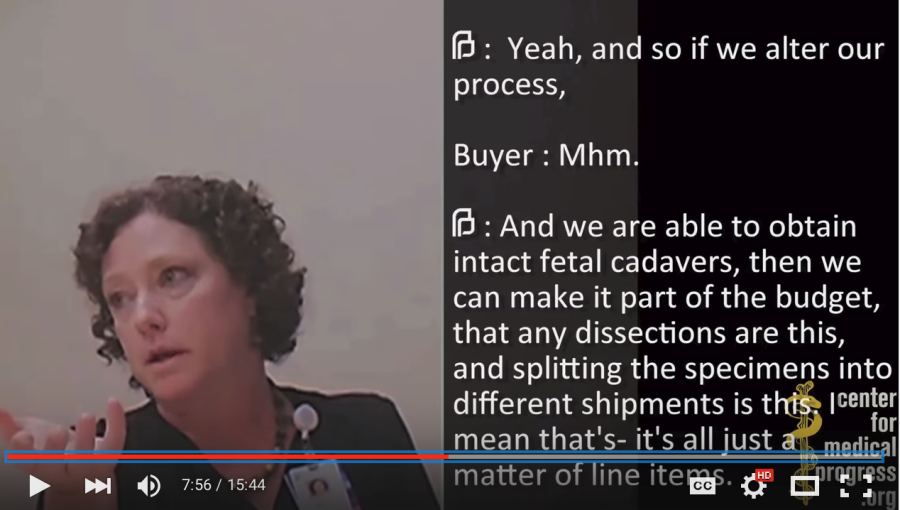
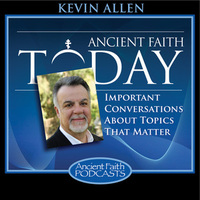
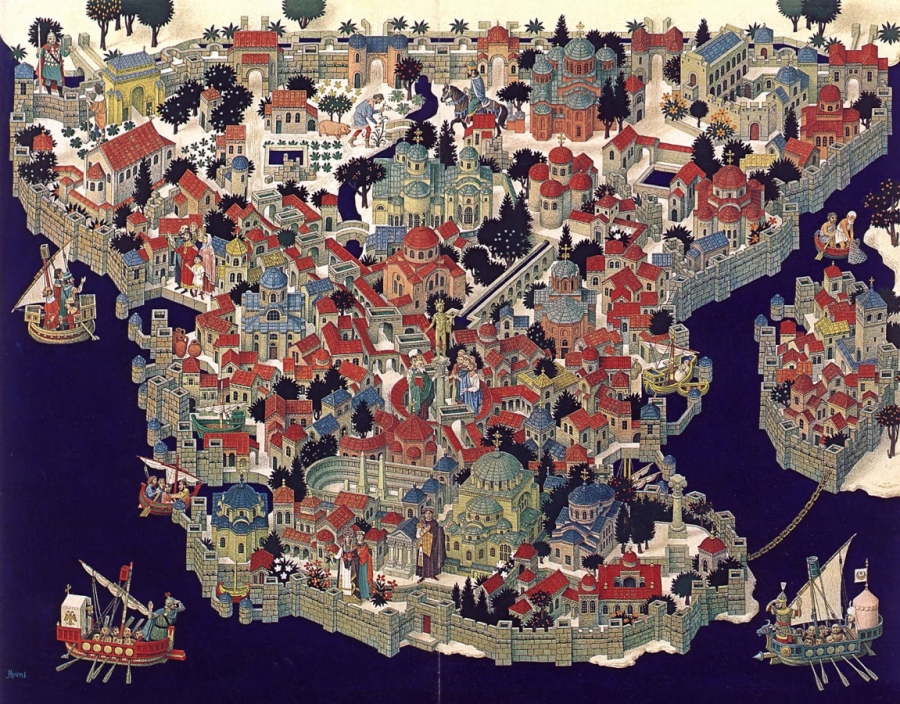
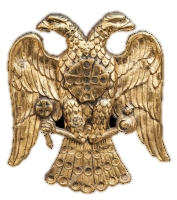
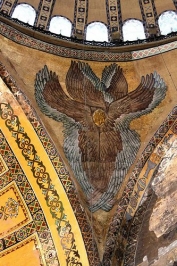

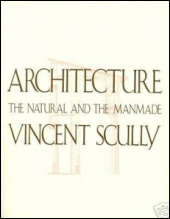

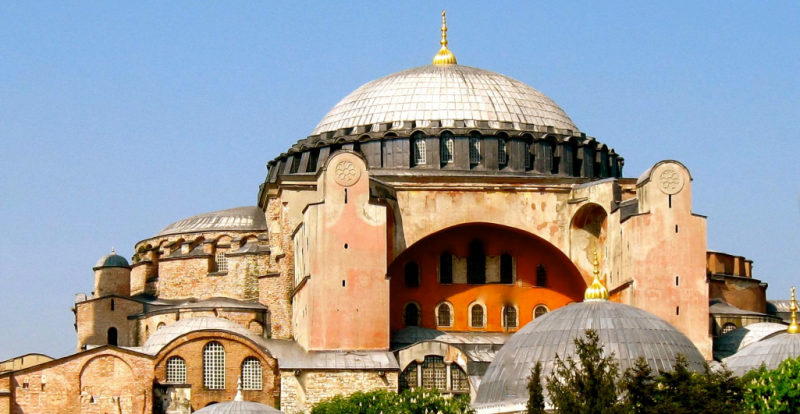
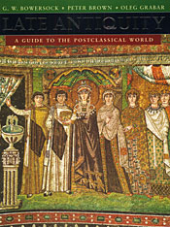
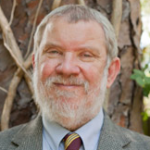 Bruce Seraphim Foltz teaches philosophy at
Bruce Seraphim Foltz teaches philosophy at 